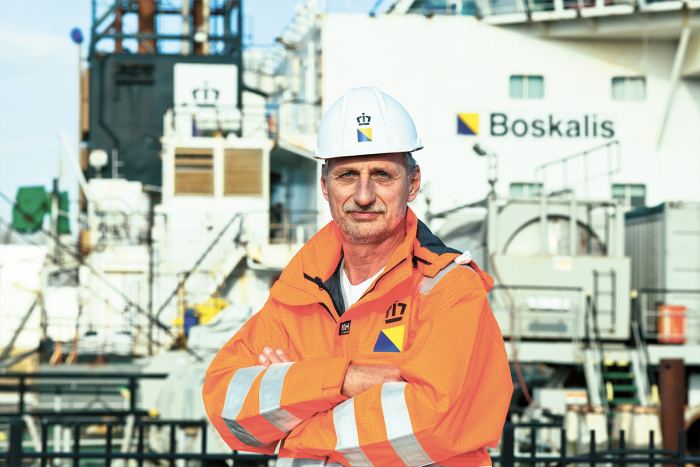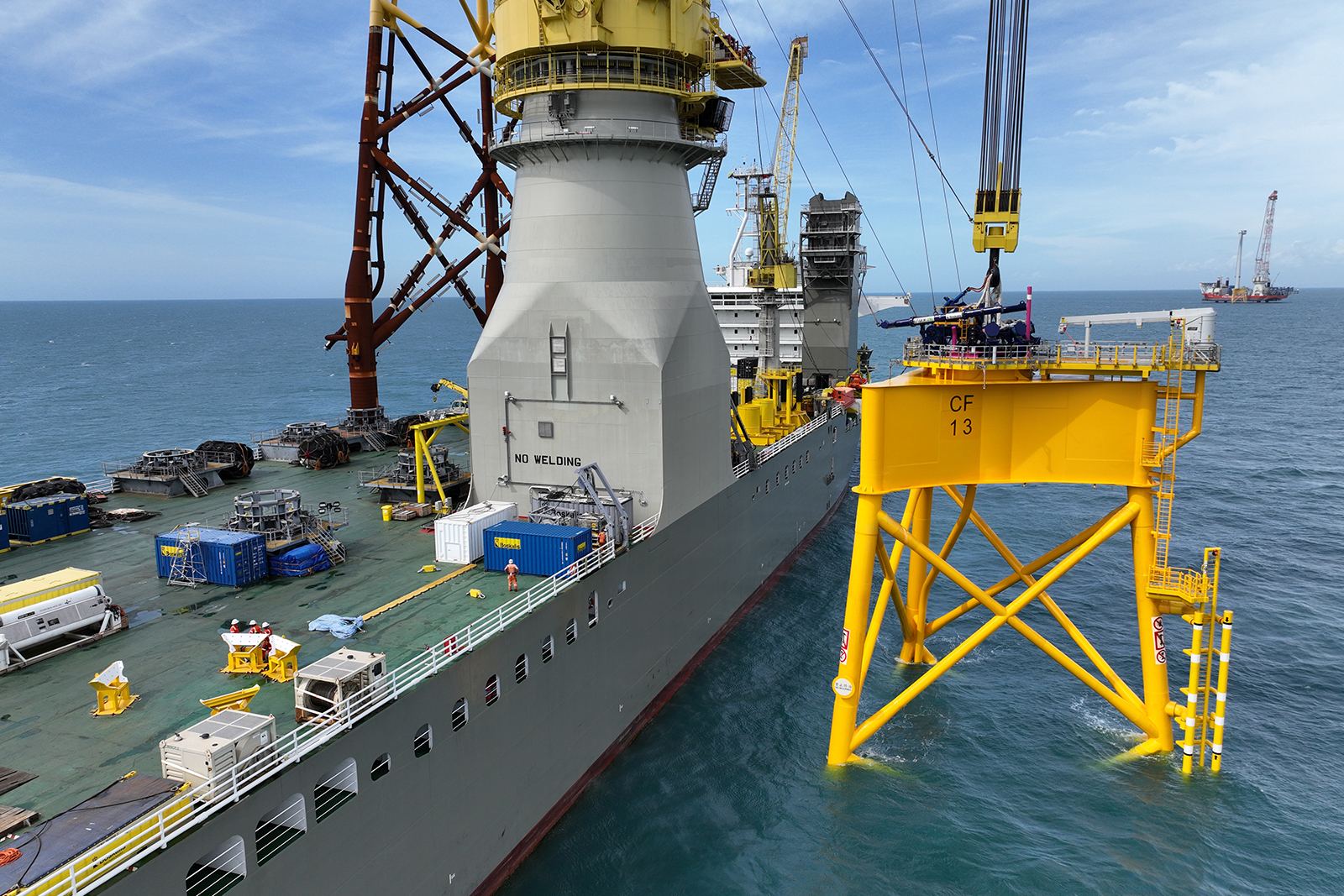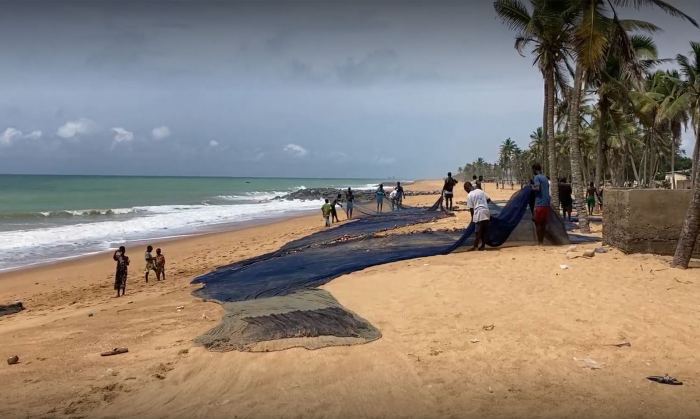In 2022, Boskalis commissioned one of the most complete and largest crane vessels in the world: the Bokalift 2. After the complex modification of this former drillship led by a team of Boskalis specialists in Singapore and China, the Bokalift 2 immediately started with the transportation and installation of jackets for the future Changfang & Xidao windfarm in Taiwan.
“The Bokalift 2 is Boskalis’ largest crane vessel. The DP2 vessel has an accommodation for 146 persons, boasts 7,500 square meters of free deck space and a 4,000 ton revolving crane capable of lifting structures more than 100 meters high,” says captain Gerben Swan, who is impressed by the performance of the Bokalift 2 on her maiden project in Taiwan. “Actually, it is above our expectations,” he says. “This vessel is so incredibly powerful, precise and stable; I’m impressed.”
In broad terms, there are four vital parameters for assessing the performance of the Bokalift 2: the proper performance of the Dynamic Positioning system (DP), the anti-heeling system that ensures the vessel remains stable when it is lifting heavy loads, the space on deck, and the weight the crane can lift at a given radius and height. Swan: “The vessel has certainly delivered what we expected in all those areas. It is so incredibly powerful and precise. Even with the heaviest loads on the crane, it remains stable out at sea because of the anti-heeling and DP systems. That’s really impressive to experience.”

Captain Gerben Swan
Parking
The Bokalift 2 is not only big and powerful; the vessel is also very maneuverable. In many ports, you will see people on shore scratching their heads when the Bokalift 2 moors on its own without the assistance of one or more harbor tugs. That is mainly thanks to the two thrusters in the stern and the two tunnel thrusters in the bows. “They make it possible to maneuver precisely in restricted spaces such as ports. So precisely that we can moor without assistance in good weather. That makes things particularly satisfying for the bridge and the crew. We can – and must – position the vessel alongside the quay to within a meter so that the crane has enough reach to pick up the loads and get them on board. Our advanced steering systems allow us to do that. For us on the bridge, these “parking” maneuvers are really great.”
Entrepreneurship
The vessel’s first project offshore Taiwan is the prelude to other major offshore wind projects around the globe. For this purpose a number of new tools are being developed to make sure that the foundations of future wind farms, which are getting bigger and bigger, can be picked up by our crane vessels. These include an upending hinge that can raise monopiles to a vertical position on board as well as a motion compensated pile gripper frame that will hold monopiles in the exact right position while being driven into the seabed. Swan: “I think it’s great how Boskalis takes on such large and complex projects such as Changfang & Xidao, but also the transport and installation of wind farms along the east coast of the United States in the coming years. I’m proud that this company is executing these complex wind projects, thereby advancing the energy transition.”



Enjoying work
Large installation vessels like the Bokalift 1 and Bokalift 2 are very much in demand in the offshore wind market. Swan: “You can see how the challenges are getting bigger and bigger because of upscaling and the time pressures that are always present in this market. It didn’t take long before our first project with the Bokalift 1 was surpassed by a later project, and the Bokalift 2 can already handle more than the first project executed by the Bokalift 1. For the upcoming wind projects we will have to push at our boundaries again: everything is getting bigger and heavier. Not least because Boskalis takes on those challenges eagerly, I enjoy going to work every day.”
